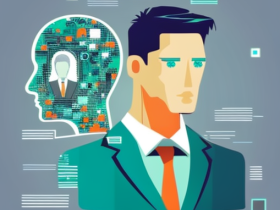In an era characterized by innovation and technological advancement, robots are no longer confined to the realms of science fiction. These mechanical marvels have transcended research laboratories to explore new frontiers, from pharmacies to the automobile industry and beyond. Their presence is revolutionizing various sectors, most notably manufacturing, by enhancing product quality, reducing turnaround times, and minimizing errors. The benefits of robots are undeniable—lower maintenance costs, increased cost-effectiveness, and higher retention rates. However, like any machine, robots require skilled individuals to operate and troubleshoot them. Enter mechatronics experts, the unsung heroes behind the seamless integration of robots into our lives.
The Evolution of Robotics in 2021
Robots owe their newfound capabilities to the synergy of artificial intelligence software, vision systems, and sensory technologies. They can now tackle intricate tasks previously reserved for human hands. Contemporary robots are remarkably user-friendly, with simplified programming interfaces and seamless intercommunication. Their integration into automation and Industry 4.0 initiatives has revolutionized manufacturing. The automotive sector, for instance, has witnessed the transformative impact of industrial robots on assembly lines, supplanting traditional vehicle production methods. The future lies in the interconnected collaboration of robots and automated guided vehicles (AGVs) or automated mobile robots (AMRs). Emerging manufacturing industries like textiles, food and beverage, wood products, and plastics are embracing robot adoption, thanks to connectivity advancements. As digital transformation continues, new business models will emerge, granting manufacturers unprecedented flexibility.
Pioneering Robotic Innovations
Let’s delve into the latest robotic advancements that are reshaping industries and why mechatronics engineers are essential in maintaining these technological marvels.
1. Humanoid Robots: Bridging the Gap
Humanoid robots are a groundbreaking class of robots designed to replicate human movement and interaction. Their applications span diverse fields, including research, space exploration, personal support, caregiving, arts and entertainment, construction, and healthcare. In 2023, the humanoid robot market is projected to reach a staggering worth of US$3.9 billion.
2. Multi-Tasking Robots: The Versatile Workforce
Modern robots are versatile and capable of performing an array of human tasks with unparalleled precision. For instance, Ross Robotics has introduced a new generation of flexible, durable, and cost-effective driverless vehicles. These multi-purpose Unmanned Ground Vehicles (UGVs) can safely replace humans in hazardous work environments.
3. Hadrian X: Transforming Construction
Fastbrick Robotics in Australia has developed Hadrian X, a construction robot that manages brick loading, cutting, routing, and installation. Equipped with dynamic stabilization technology, it adapts to real-time environmental variables, ensuring precision in large-scale outdoor tasks.
4. Exploring the Deep with Ocean Robots
Our oceans hold countless mysteries beneath their depths. High-tech ocean robots, like the Eelume EELY500 developed by Norwegian firm Eelume, are enabling underwater exploration and inspection in industrial settings. These robots are poised to revolutionize underwater maintenance and repair.
5. Combatting Disease with Saul Robot
The Saul Robot is a remarkable innovation in the fight against diseases like Ebola. It employs powerful pulses of UV rays to disintegrate the virus, effectively eliminating it. During times when effective treatments are scarce, this robotic equipment has been deployed by the Air Force to decontaminate areas housing quarantine workers.
6. Paro: A Therapeutic Companion
Dr. Takanori Shibata’s creation, Paro, is a therapeutic robot guided by artificial intelligence. It adjusts its behavior in response to various sensors, including light, sound, temperature, and touch. Paro aids in improving communication between caregivers and patients while reducing stress.
7. Pepper: The Emotion-Sensitive Robot
Pepper, a semi-humanoid robot developed by SoftBank Robotics, possesses the remarkable ability to detect and respond to human emotions, such as grief, surprise, excitement, and anger. Equipped with multi-directional sensors, Pepper creates a natural and appropriate interaction with humans.
8. Robotic Vacuum Cleaners: Cleaning Revolutionized
Robotic vacuum cleaners, with their advanced programming, have simplified household chores. These self-cleaning devices can easily navigate under furniture, saving space compared to traditional vacuum cleaners. iRobot’s Roomba stands out as an intelligent and efficient choice in this category.
9. Asus Zenbo: Your Personal Assistant
Asus Zenbo is an affordable robot capable of autonomous movement and voice recognition. It assists individuals in remembering important tasks like exercise routines, medication schedules, and doctor’s appointments. Moreover, it can monitor its surroundings and connect with smart home devices for added security.
10. Revolutionizing Last-Mile Delivery with Delivery Robots
In today’s competitive market, efficient last-mile delivery services are vital for businesses. Robotic courier services, exemplified by Amazon’s Scout, offer innovative solutions. These delivery robots navigate sidewalks and open doors to deliver products directly to customers’ doorsteps.
In Conclusion: A Transformative Era
The 21st century has witnessed unprecedented technological advancements, from the proliferation of smartphones to the rise of AI, deep learning, robotics, and autonomous technology. These innovations have not only simplified our lives but have also ushered in a new era where robots play a pivotal role. With their ability to perform complex tasks, robots are seamlessly integrating into various facets of human life, promising a future filled with endless possibilities.








Leave a Reply